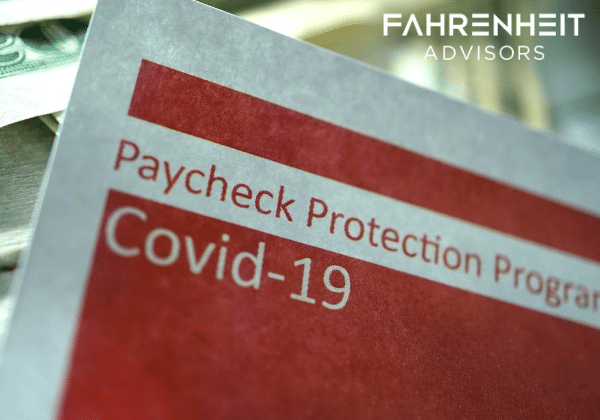6 New PPP Loan Forgiveness Updates

It has been awhile since we updated our clients and friends about the Payroll Protection Program (PPP). New applications were not accepted after August 8, 2020, most earlier loan recipients completed their 8-week covered period over the summer, and the pace of revisions to the program finally slowed down. As a result, there was not a lot new to talk about.
Now borrowers are focused on strategies to maximize loan forgiveness while also trying to sort out some common PPP rumors.
Here are answers to six questions which will address both strategies and the rumors:
1) Is there going to be a second PPP Program, and will I qualify?
At this point there is NOT a second PPP program in place. There has been talk about a new loan program but making it a reality will require cooperation between both houses of Congress and the President. If you have watched much of the political conventions over the past two weeks, it seems hard to imagine that a consensus will be reached any time soon. If they do come to agreement, expect that you will need to show a reduction in sales or profits to be eligible.
2) Is my loan automatically forgiven if it is less than $150,000?
Not yet, though Treasury Secretary Mnuchin had floated this idea some time ago and it had made its way into several bills that never passed. Approximately 85% of PPP loans are $150,000 or less, so banks would welcome the ability to avoid the need to do a detailed review of all of those forgiveness applications.
3) I heard that if my sales were lower than last year, I would get automatic forgiveness? Is that true?
Not exactly. One of the gateways to using the EZ Forgiveness Application or using FTE Reduction Safe Harbor 1 on the full Application is proving:
- “an inability to return to the same level of business activity as the borrower was operating at before February 15, 2020, due to compliance with requirements established or guidance issued between March 1, 2020 and December 31, 2020 by the Secretary of Health and Human Services, the Director of the Centers for Disease Control and Prevention (CDC), or the Occupational Safety and Health Administration related to the maintenance of standards for sanitation, social distancing, or any other worker or customer safety requirement related to COVID-19.”
Showing that sales were reduced from the pre-February 15 level, or as compared to the prior year, can help you justify that your business was negatively impacted, but you must start by defining which government actions impacted your business.
- IMPORTANT: Subsequent regulations recognized that it was the states and not the Federal government that issued most of the requirements and guidelines, so it is OK to rely on state and local actions as well.
- HEADS UP: Even if your business was impacted by governmental requirements and guidelines, if your sales level did not drop do not plan on using this strategy. It is likely to be rejected by reviewers.
4) Why hasn’t my bank opened their forgiveness portal yet?
Several reasons…the main one being their hope that some sort of automatic forgiveness as mentioned above will pass, thus reducing their workload. The banking community is also cautious about opening their portals only to have the government change the rules once again. They have been burned before, spending time and money on programming and communication that ended up being worthless. Expect them to drag their feet.
American Banker tells us Why banks are putting PPP forgiveness on the back burner in THIS ARTICLE published August 10,2020.
5) What about that Main Street Lending Program that was supposed to be the next source of emergency liquidity?
We have talked to a lot of bankers about this and have not heard a lot of excitement about the program. Apparently, based on the parameters laid out by the Treasury Department, Main Street Loans will be appropriate for a very small slice of the borrowing community. As a result, there is not a lot of focus on the program by bankers.
Inc. describes the Need for the Federal Reserve to step up and help the Main Street Lending Program in THIS ARTICLE published August 28, 2020.
6) How do I decide whether to use 8 weeks or 24 weeks as my PPP Covered Period?
This is a complex case by case issue and we have clients using both methods. In general:
- If you need 24 weeks to use all loan proceeds on qualified expenses AND you do not plan to cut FTE’s, use the 24-week period.
- If you used most of the loan proceeds in 8 weeks AND do plan to have reductions in FTE’s, use the 8-week period.
- For all other cases, it requires a sensitivity analysis of how much was spent when and what will your FTE headcount look like from 8-24 weeks.
The GOOD news is that you have 10 months from the end of your covered period to apply for forgiveness. This means that you can calculate your best option after the fact. NO NEED TO HURRY JUST TO GET IT DONE!
HEADS UP: The payroll services are working hard to generate reports to support your PPP Forgiveness Application, but their quality is still very inconsistent. Some errors come from incomplete data being input by users and other appear to be programming errors. Check the reports carefully!
Our experts stand ready to help you with your loan as well as your unique finance and accounting needs – Experts@FahrenheitAdvisors.com.
About the Author
 Doug Jones, Managing Director, provides fractional CFO and senior financial management services to small and midsize organizations. In addition to improving his clients’ accounting and finance operations, Doug frequently serves as the link between company owners and outside advisors including attorneys, CPAs, investment bankers, appraisers, and personal financial advisors. He is skilled in identifying and integrating the full range of financial and non-financial business issues in contract negotiations and resolution of business decisions. He is a member of Fahrenheit’s Leadership Team.
Doug Jones, Managing Director, provides fractional CFO and senior financial management services to small and midsize organizations. In addition to improving his clients’ accounting and finance operations, Doug frequently serves as the link between company owners and outside advisors including attorneys, CPAs, investment bankers, appraisers, and personal financial advisors. He is skilled in identifying and integrating the full range of financial and non-financial business issues in contract negotiations and resolution of business decisions. He is a member of Fahrenheit’s Leadership Team.